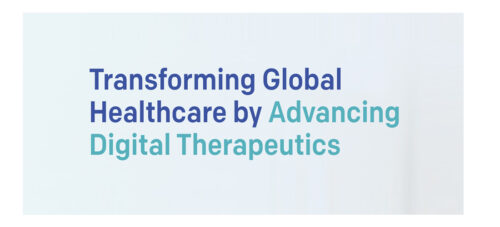As seen on – Today’s Clinical Lab
December 12, 2022
Estimates of the US digital therapeutics (DTx) market have jumped by billions each year since 2019 and, as of November 2022, is expected to hit $11.2 billion by 2030, while the global DTx market is projected to reach $56 billion over the next five years. The market was driven by the FDA fast-tracking pandemic-related approvals for prescription DTx products to help treat the sharp increase in patients with anxiety and depression.
There are many types of DTx manufacturers, ranging from emerging DTx companies to public companies like Pear Therapeutics and Akili Interactive to global pharmaceutical companies like Roche and AstraZeneca, which are acquiring or partnering with DTx startups to enter the market.
To add further complexity, there are FDA-approved prescription digital therapeutics, nonprescription digital therapeutics, and those that may eventually seek approval.
Benefits of digital therapeutics for trial recruitment
Traditional clinical trials are complex, but architecting a DCT from the ground up is even more complicated. And while nearly nine in 10 sponsors say they use some elements of DCT technologies in their trials, fully virtual trials are still rare. At a recent conference, one top-10 pharma executive said that while more than half of their trial site visits are virtual, no trials are 100 percent virtual.
One reason for this is because designing a DCT protocol requires highly specialized expertise. Sponsors are leaning into the decentralized approach to speed patient recruitment, increase access and diversity, improve efficiency, and capture real-world data, but are still developing protocol designs within a traditional framework. Expert DCT protocol designers, however, review trial designs to determine what aspects can be decentralized (and which cannot) and the best way to decentralize those elements. They factor DCT considerations into the process from the beginning, instead of shoehorning digital elements into the trial later or superimposing them over traditional designs.
Swing Therapeutics is a DTx company that was founded less than three years ago with $9 million in seed funding and that wrapped up $10.3 million in Series A funding in June. The company is running a hybrid trial of its investigational DTx for fibromyalgia and is expected to enroll up to 300 participants recruited from 15–25 physical sites, plus a virtual site.
The virtual site provider is remotely recruiting, screening, consenting, and enrolling participants in Swing’s PROSPER-FM trial from across the US.
By eliminating physical and geographic barriers to trial participation and execution, they have improved patient enrollment by 10x. In fact, the virtual site has surpassed all the bricks-and-mortar sites in patient enrollment.
Decentralized clinical trials are well-suited for studying digital therapeutics
Many virtual or decentralized clinical trial (DCT) specialists are successful in supporting DTx companies, as DCTs are well-suited to support prescription and non-prescription DTx studies. Fundamentally, there are no physical logistics with a DTx—no shipping, storing, chain of control, cold storage, or biohazards, and endpoints can often be captured within the DTx application itself, naturally aligning DCTs with DTx studies. Ultimately, Swing hopes for FDA-approval and will go to market.
“We are focused on getting patient recruitment right,” says Mike Rosenbluth, PhD, chief executive officer at Swing. “A virtual services model enables us to efficiently recruit participants representative of the entire patient population. It solves a huge challenge and will be critical to rapidly develop the evidence needed to bring an effective digital therapy to millions suffering from chronic illness.”
Ongoing challenges of commercializing digital therapeutics
And, while the research and development processes involved in digital therapeutics are innovative, commercializing a DTx may require more out-of-the-box thinking. Many presenters at the fall DTx East event said that even after successfully earning FDA-approval, their therapeutics are failing in the marketplace. There are new challenges to address such as lack of awareness by clinicians and their inability to easily prescribe DTx to patients.
This last challenge is uncharted territory for DTx companies. And whereas traditional drug companies average between $200–$300 million to launch a product, most DTx companies don’t have that kind of funding available to them. Plus, there are various launch challenges, patient support programs to implement, and sales and marketing teams to recruit and train.
For Swing Therapeutics and other DTx companies to be profitable or even sustainable, they need to make it easy for clinicians to prescribe digital therapeutics and get reimbursed, while also making it easy for patients to use DTx.
A new CMS code that went into effect in April 2022 will help by making it easier for commercial and Medicaid plans to cover these therapies. Yet, there are still many questions about what payment models will work best and how to get on formularies and more.










